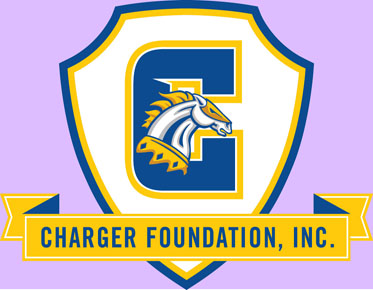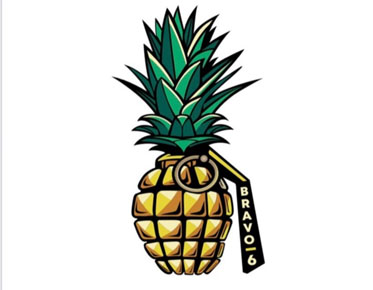Embroidery Backing and Vector Graphics: A Guide to Stability and Style
Embroidery, an art form that has stood the test of time, seamlessly blends tradition and innovation. It's a craft that marries the intricate beauty of needlework with the precision of modern technology. One crucial element in achieving stunning embroidered designs is the use of backing materials. When paired with vector graphics, these backings provide stability and style, ensuring your embroidery projects not only look great but also stand the test of time. In this comprehensive guide, we'll delve into the world of embroidery backing, the role of vector graphics, and how they come together to elevate your embroidery to new heights.
The Foundation of Great Embroidery: Backing Materials
Embroidery backing, also known as stabilizer, is the unsung hero behind every well-executed embroidery project. Its primary purpose is to provide stability and support to the fabric during the stitching process. Without the right backing, your embroidery can pucker, warp, or even tear the fabric, resulting in an unsatisfactory final product.
Vector Graphics: Precision and Scalability
Vectorgraphics, unlike raster images, are composed of mathematical equations that define shapes and lines. This characteristic ensures that vector designs can be scaled up or down without losing quality or clarity. Precision and scalability are two key advantages that vector graphics bring to the world of embroidery.
The Perfect Marriage: Backing and Vector Graphics in Embroidery
When you combine embroidery backing with vector graphics, you create a harmonious synergy between stability and style. The backing material supports the fabric, preventing distortion and ensuring clean, precise stitching. Meanwhile, vector graphics provide the design itself, allowing for intricate details, sharp lines, and a level of customization that's hard to achieve with other techniques.
Choosing the Right Backing Material
Selecting the appropriate backing material is vital for embroidery success. Here are some common types of stabilizers:
● Cutaway Stabilizer: Ideal for heavyweight fabrics or designs that require long-term
stability.
● Tearaway Stabilizer: Suitable for lightweight to medium-weight fabrics and designs that
don't require long-term support.
● Wash-Away Stabilizer: Used when the stabilizer needs to be completely removed after
embroidery.
● Heat-Away Stabilizer: Dissolves when exposed to heat, making it suitable for delicate fabrics or intricate lace designs.
Choosing the right backing ensures that your embroidery project maintains its shape and structure while allowing the stitches to hold up beautifully.
Creating Vector Graphics for Embroidery
Before we dive deeper into the marriage of backing and vector graphics, it's essential to understand how to create vector graphics tailored for embroidery:
Vector vs. Raster Graphics
Vector graphics are resolution-independent and perfect for embroidery, while raster graphics (such as JPEGs or PNGs) have a fixed resolution and may not scale up well.
Vector Graphic Software
Software like Adobe Illustrator or CorelDRAW is commonly used to create vector designs for embroidery. These tools offer precise control over shapes, lines, and colors.
Designing for Embroidery
When creating vector graphics for embroidery, consider factors such as stitch density, thread color changes, and the type of fabric you'll be working with. Design with embroidery in mind to achieve the best results.
The Embroiderer's Toolbox: Machines and Techniques
Embroidery involves more than just the design and backing; the machine and techniques used play a significant role in the final outcome:
● Hooping: Properly hooping the fabric and backing is crucial to maintain tension
and alignment during stitching.
● Tension Control: Adjusting the machine's tension ensures that stitches are neither too
loose nor too tight.
● Thread Selection: The choice of thread affects the look and durability of your
embroidery.
● Needle Choice: Different needles are suitable for various fabrics and designs.
Understanding your embroidery machine and mastering these techniques is essential for achieving professional results.
Stitching Success: The Embroidery Process
Executing a successful embroidery project involves precise steps, including design and backing placement, and the actual stitching process. Proper alignment and tension control are crucial at this stage.
Removing Backing Material: A Crucial Step
Once the embroidery is complete, removing the backing material is a critical step. Carefully trim and tear away excess stabilizer without damaging the stitches or the fabric. Proper removal ensures that the embroidery remains comfortable to wear and visually appealing.
Troubleshooting Common Embroidery Backing Issues
Embroidery isn't always without challenges. Learn how to troubleshoot common issues like puckering, misalignment, or thread breaks. Understanding these problems and their solutions will help you master the art of embroidery.
Style and Substance: Vector Graphics' Role in Embroidery
Vector graphics bring a myriad of benefits to embroidery projects:
● Customization and
Personalization: Vector graphics allow for the
creation of unique and personalized designs, perfect for gifts or special
occasions.
● Branding and Logo Embroidery: Many businesses use embroidery for branding purposes, ensuring that
their logos are reproduced with precision and consistency.
● Intricate and Detailed Designs: Vector graphics enable the creation of intricate and detailed embroidery, making it suitable for fine art, fashion, and more.
Conclusion: Elevate Your Embroidery with Backing and Vector Graphics
In the world of embroidery, the pairing of
backing materials and vector graphics is a dynamic duo that guarantees stable,
stunning, and stylish results. Whether you're a novice or an experienced
embroiderer, understanding the role of these elements and how they work
together is essential for achieving embroidery that stands out for all the
right reasons. So, gather your materials, unleash your creativity, and embark
on an embroidery journey that combines stability and style in perfect harmony.



